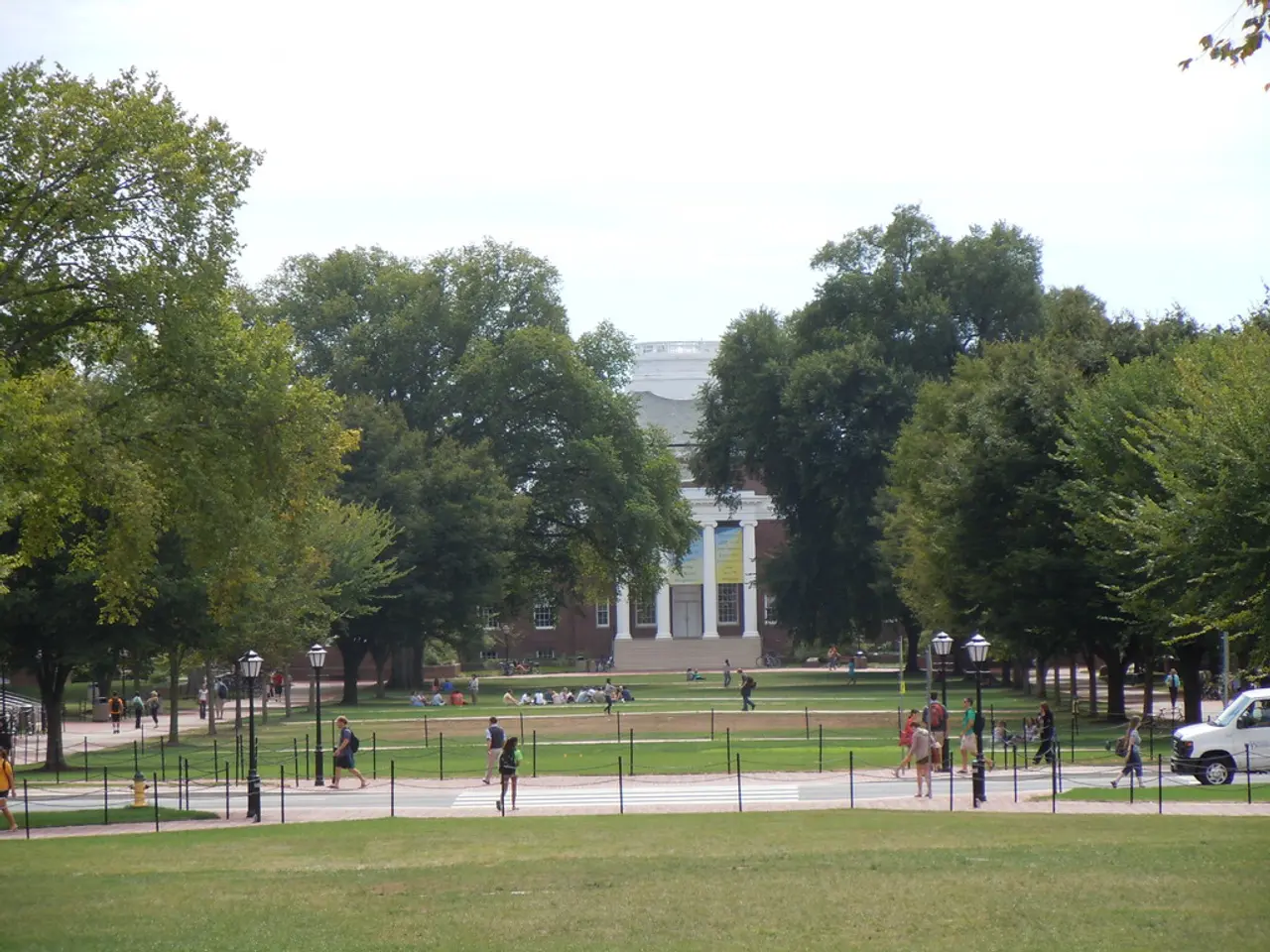Cost Breakdown for College Life in Urban Areas: Financial Planning Tips for Students
Living Costs for Students in Major Indian Cities: A Comprehensive Breakdown
Living costs for students in India's major cities, such as Mumbai, Delhi, Bangalore, and Pune, can vary significantly beyond tuition fees. Here's a detailed look at the typical monthly expense ranges for these cities.
In Delhi, shared apartments can range from ₹7,500 to ₹23,000, while food costs between ₹3,000 and ₹5,000. Transportation expenses are around ₹500 to ₹1,500, utilities ₹600 to ₹1,500, Wi-Fi starts at ₹700, and miscellaneous expenses can amount to ₹3,000 to ₹5,000.
Mumbai typically sees costs between ₹13,000 to ₹20,000 per month. Shared apartments cost around ₹8,000 to ₹12,000, single rooms in PGs range from ₹12,000 to ₹46,000; food costs ₹1,500 to ₹3,000; transportation ₹1,000 to ₹1,500; utilities ₹2,000 to ₹3,000; plus Wi-Fi and miscellaneous expenses.
In Bangalore, while specific numeric ranges are less detailed, costs are comparable to Delhi and Mumbai, influenced by housing demand and urban growth. Housing, food, transport, and utilities form the main expense components, with rising costs due to inflation and infrastructure improvements.
Pune's costs generally trend slightly lower than Mumbai and Bangalore, often in the ₹10,000 to ₹15,000 range for students, depending on lifestyle and accommodation type.
The exact living cost depends largely on accommodation type (shared apartment, single room PG), location, lifestyle, and personal spending. Rentals in prime city areas are substantially higher. Utilities vary by season and consumption. Public transport passes reduce commuting costs.
Here's a summary of typical monthly expense ranges:
| Expense | Delhi | Mumbai | Bangalore (estimated) | Pune (approximate) | |-----------------|--------------------|--------------------|----------------------|--------------------| | Rent (shared) | 7,500 – 23,000 | 8,000 – 12,000 | Similar to Delhi/Mumbai | 6,000 – 15,000 | | Food | 3,000 – 5,000 | 1,500 – 3,000 | 2,000 – 4,000 | 2,000 – 3,500 | | Transportation | 500 – 1,500 | 1,000 – 1,500 | 800 – 1,500 | 500 – 1,000 | | Utilities | 600 – 1,500 | 2,000 – 3,000 | 800 – 1,500 | 700 – 1,500 | | Wi-Fi | From 700 | From 499 | Similar range | Similar range | | Miscellaneous | 3,000 – 5,000 | ~5,000 | Similar to Delhi/Mumbai | 2,000 – 4,000 |
These figures avoid tuition and primarily cover housing (rent), food, transport, utilities, internet, and personal expenses.
In summary, students should budget at least ₹12,000 to ₹20,000 per month for basic living expenses in these major Indian cities beyond tuition fees, with Mumbai and Delhi usually on the higher end and Pune slightly lower. Bangalore's expenses align closely with Delhi and Mumbai due to its urban growth and tech-driven demand.
Living costs in metro cities like Mumbai and Delhi can range from ₹15,000 to ₹40,000 per month, while in tier 2 cities, they can be between ₹10,000 and ₹20,000 per month. In Pune, partitioned flats cost ₹10,000-18,000 per individual, and in Mumbai, a shared flat rent can vary between 18,000 and 30,000 rupees per individual, with high deposits of 50,000 to 1,00,000 rupees.
Many students relocate to major cities like Delhi, Bangalore, Pune, Mumbai, and so on for quality education and better career opportunities. In Delhi, PG housing in areas like Mukherjee Nagar, Kamla Nagar, and North Campus costs between ₹8,000 and ₹15,000 per month, while in South Delhi, they cost between ₹12,000 and ₹20,000. In Bangalore, PG accommodation in areas like Koramangala, HSR Layout, and Whitefield costs between ₹7,000 and ₹14,000 per month.
In Mumbai, living costs for PG shared accommodations in Thane, Mulund, Kandivali, or Malad can vary from 10,000 to 18,000 rupees a month. Close to South Mumbai colleges, they can range between 15,000 and 25,000 rupees. In Delhi, shared house rentals cost around ₹10,000 to ₹20,000 per person, and in Delhi, during unpleasant summers and winters, an added power bill of approximately ₹800-1,500 can be expected.
In Bangalore, mess charges range between ₹2,800-4,000, while cooking costs about ₹3,500-5,000 a month. BMTC buses in Bangalore cost between ₹300 to ₹600 monthly. Monthly passes for Delhi metro cost between ₹800-₹1,200. Street food in Delhi costs ₹40-₹120 for lunch, while restaurant meals cost ₹180-₹350.
In Mumbai, food costs for a month can range between 3,500 and 5,000 rupees for mess food, and 4,000 to 6,000 rupees for groceries for home food. Mess facilities in Pune cost ₹2,800-4,200 and cooking costs ₹3,200-4,800 per month. PMC buses in Pune cost ₹400-700 per month.
Approximately 40 million students are enrolled in higher education in India, making these cities hubs for academic and professional growth.
- A comprehensive breakdown reveals that living costs in India's major cities like Delhi, Mumbai, Bangalore, and Pune can significantly exceed tuition fees, with expenses primarily covered by housing, food, transport, utilities, internet, and personal expenses.
- For instance, in Delhi, shared apartments can cost between ₹7,500 to ₹23,000, food between ₹3,000 and ₹5,000, transportation ₹500 to ₹1,500, utilities ₹600 to ₹1,500, and miscellaneous expenses can amount to ₹3,000 to ₹5,000.
- The high cost of living in metro cities like Mumbai and Delhi, ranging from ₹15,000 to ₹40,000 per month, is a factor driving students towards personal-finance education and budgeting.
- Such lifestyle expenses are substantial, but they offer opportunities for cultural immersion, education and self-development, and potential access to improved business and job possibilities.
- With universities and businesses investing in education-and-self-development resources, students could potentially leverage their experiences to strengthen their financial literacy and make informed decisions about their personal-finance management, ultimately setting them on a path towards financial stability and independent living.




